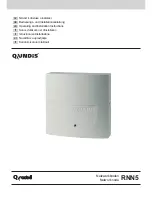
Member Port Time:
Specify the aging time of the member port. Within this time, if
the switch doesn’t receive MLD report message from the
member port, it will consider this port is not a member port any
more.
Router Port Time:
Specify the aging time of the router port. Within this time, if the
switch doesn’t receive MLD query message from the router
port, it will consider this port is not a router port any more.
Max Response
Time:
Enter the host’s maximum response time to general query
messages in a range of 1 to 25 seconds.
Router Ports:
Enter the static router port which is mainly used in the network
with stable topology.
UNIT:
Select the unit ID of the desired member in the stack.
VLAN Table
Select:
Select the desired VLAN ID for configuration. It is multi-optional.
VLAN ID:
Displays the VLAN ID.
Fast Leave:
Displays the fast leave feature of the VLAN.
Member Port Time:
Displays the member port time of the VLAN.
Router Port Time:
Displays the router port time of the VLAN.
Max Response
Time:
Displays the max response time of the VLAN.
Static Router Ports:
Displays the static router ports of the VLAN.
Dynamic Router
Ports:
Displays the dynamic router ports of the VLAN.
Configuration procedure:
Step Operation
Description
1
Enable MLD Snooping
function
Required. Enable MLD Snooping globally on the switch on
Multicast
→
MLD Snooping
→
Snooping Config page
.
2
Configure the multicast
parameters for VLANs
Optional. Configure the multicast parameters for VLANs
on
Multicast
→
MLD Snooping
→
VLAN Config page.
If a VLAN has no multicast parameters configuration, it
indicates the MLD Snooping is not enabled in the VLAN,
thus the multicast data in the VLAN will be broadcasted.
9.2.4
Querier Config
In an IP multicast network that runs MLD, a Layer 3 multicast device works as an MLD querier to
send MLD queries and manage the multicast table. But MLD is not supported by the devices in
147
















































